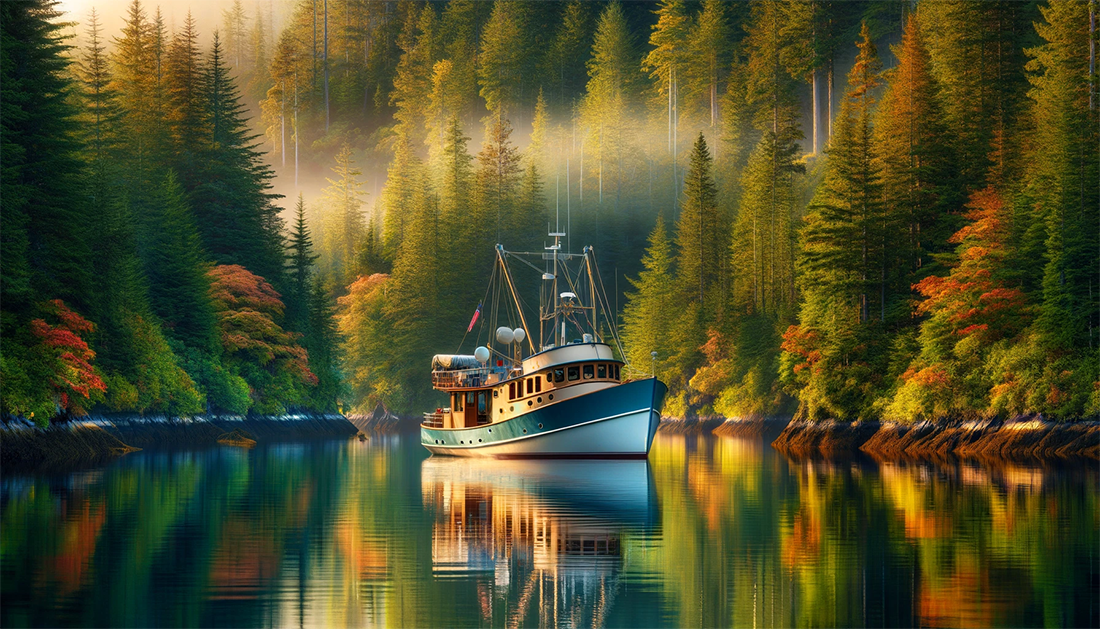
The Great Loop
Embark on the journey of a lifetime as you discover the allure of The Great Loop, a remarkable boating adventure that beckons sailors and maritime enthusiasts alike. This extraordinary voyage is not just a journey across waters; it is a passage through diverse cultures, breathtaking landscapes, and a unique tapestry of American and Canadian waterways.
The Great Loop, an extensive system of rivers, lakes, and coastal passages, forms a continuous water circuit around the eastern portion of North America. This epic route stretches over 6,000 miles, encompassing parts of the Atlantic and Gulf Intracoastal Waterways, the Great Lakes, the Canadian Heritage Canals, and the inland rivers of America’s heartland. From the vibrant shores of New York City to the serene waters of the Mississippi, from the majestic Great Lakes to the tropical waters of Florida, the Loop offers an unparalleled opportunity to explore some of the most scenic and culturally rich regions of North America.
But what truly sets The Great Loop apart is its cultural significance. It's a journey that weaves through various historical landmarks, charming small towns, and bustling cities. Each leg of the trip offers a unique glimpse into the heart and soul of the regions you traverse. You'll encounter the rich tapestry of North American heritage, from the indigenous cultures that first navigated these waters to the diverse communities that flourish along its banks today.
The Great Loop is more than just a sailing route; it's a popular choice for adventurers and dreamers alike. It's a test of skill and endurance for seasoned sailors and a grand escapade for those new to long-distance boating. The Loop attracts a wide range of boaters, from solo travelers seeking introspection to families and couples looking for the ultimate bonding experience. The sense of accomplishment in completing the Loop is unparalleled, marked by an exclusive tradition of flying the Great Loop burgee - a badge of honor among the boating community.
Here is a list of some of the major waterways that are typically traveled when navigating The Great Loop:
- Atlantic Intracoastal Waterway (AIWW): This waterway runs from Norfolk, Virginia, to Key West, Florida, and is a key component of the Great Loop, providing a sheltered passage along the Atlantic coast.
- Erie Canal: In New York, the Erie Canal connects the Hudson River to the Great Lakes, serving as a historic and scenic route through upstate New York.
- Hudson River: Flowing through New York State, the Hudson River is the navigational path from New York City to the Erie Canal.
- Great Lakes: This group of five large freshwater lakes forms the largest group of freshwater lakes on Earth, and includes Lake Ontario, Lake Erie, Lake Huron, Lake Michigan, and Lake Superior.
- Illinois River: Connecting the Great Lakes to the Mississippi River, the Illinois River is an essential part of the loop, flowing through Illinois and joining the Mississippi near St. Louis.
- Mississippi River: One of the most famous rivers in the United States, the Mississippi River provides a significant stretch of navigation for loopers, particularly between the Illinois River and the Ohio River.
- Tennessee-Tombigbee Waterway (Tenn-Tom): This waterway provides a shortcut from the Tennessee River to the Gulf of Mexico, bypassing much of the lower Mississippi River.
- Ohio River: The Ohio River is an important connection between the Mississippi River and the Tennessee River or the Cumberland River.
- Cumberland River and Tennessee River: These rivers are alternative routes to the Tenn-Tom Waterway, offering beautiful landscapes and different points of interest.
- Gulf Intracoastal Waterway (GIWW): This coastal waterway runs along the Gulf of Mexico from Florida to Texas and is a critical segment of the loop.
- Okeechobee Waterway (Florida): Crossing Florida, this waterway connects the Atlantic Ocean to the Gulf of Mexico and includes the famous Lake Okeechobee.
- Trent-Severn Waterway (Canada): In Ontario, Canada, this waterway connects Lake Ontario to Lake Huron and is known for its beautiful scenery and unique lock systems.
- Rideau Canal (Canada): Another scenic route in Ontario, Canada, connecting Ottawa to Lake Ontario.
- Chesapeake Bay: Often included as a side trip, the Chesapeake Bay offers a wealth of cruising opportunities and is rich in history and natural beauty.
- Erie Canal Locks (New York)
- Trent-Severn Waterway Locks (Ontario, Canada)
- Illinois Waterway Locks (Illinois)
- Mississippi River Locks (various states)
- Ohio River Locks (Ohio, Kentucky, Indiana)
- Cumberland River Locks (Kentucky, Tennessee)
- Tennessee River Locks (Tennessee, Alabama)
- Black Warrior-Tombigbee Waterway Locks (Alabama)
- Okeechobee Waterway Locks (Florida)